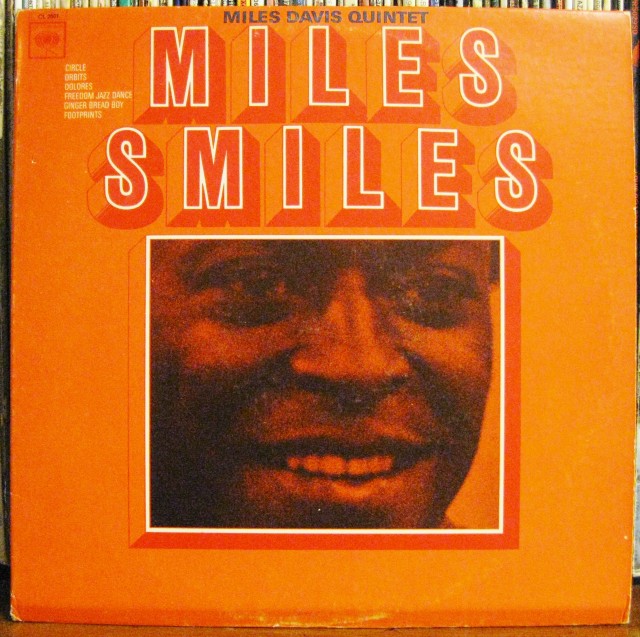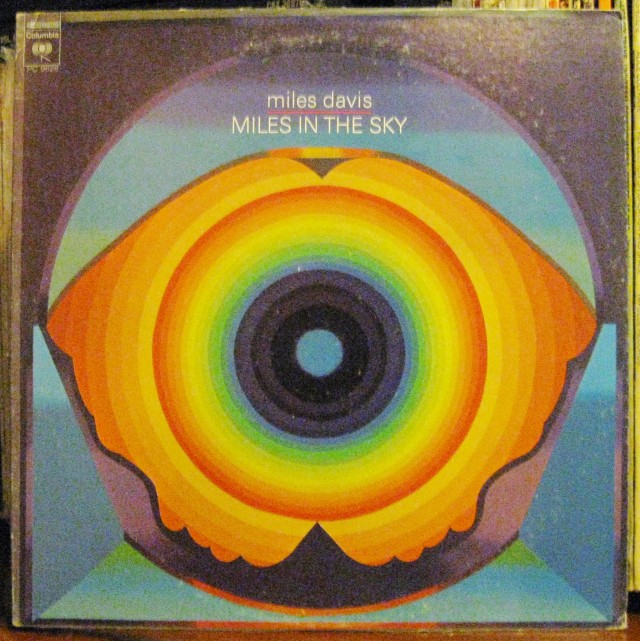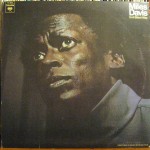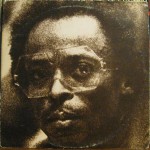April 5, 2015 | Posted in JAZZ | By Jason Sositko
Nearly telepathic band interplay
At the risk of hyperbole, I believe The Miles Davis Quintet of 1965 to 1968 is the greatest modern jazz group ever assembled. Think about it? Saxophonist Wayne Shorter at his composing and playing peak, Herbie Hancock never played better on acoustic piano than with Miles, and Tony Williams on Drums?
Think about it? Saxophonist Wayne Shorter at his composing and playing peak, Herbie Hancock never played better on acoustic piano than with Miles, and Tony Williams on Drums?
Lets face it, Williams was one of the most important and groundbreaking drummers in music history, and he was doing things no other drummer had done until he did them. Bassist Ron Carter, who played a free-flowing flexible all over the neck sort of style, that bent but never broke, was the most innovative bass player of his era.
Then you have Miles himself, nearly 40 years old? He turned himself from a minimalist “play what’s not there” player, to a guy who’s dexterity and bravado could perhaps rival the other trumpet masters like Dizzy Gillespie and Freddie Hubbard in dexterity. Who else made a great leap on their instrument in their mid 30’s?
John Coltrane is the only one I can think of so late to come into his own as such a high level as a player after age 30. I happen to think that Miles’ best, or at least most muscular playing, would actually be from 1969 to 1972 on albums like Bitches Brew and A Tribute to Jack Johnson. Overall Miles never played better than he did with “The Quintet”.
When the young lion movement of the early 80’s arrived, Wynton Marsalis and the like, were obviously huge champions of the music, and practically every album apart from free or electric jazz owes much gratitude to this 1965-1968 time period of Miles Davis.
Check out Last years box Set of session outtakes loaded with in studio chatter of the band working out the music of this great quintet. I think it is a must have for any die-hard Miles fanatic.
When the quintet came together
By then end of 1964, Miles had already assembled 4 members of the quintet, only saxophonist Wayne Shorter was missing. With the underrated George Coleman filling that role, he lacked what Miles needed, a compositional force his equal, and as it turned out perhaps his superior? Wayne Shorter fit the bill and then some.
Before 1964 was up, Shorter left Art Blakey where he had been for 5 years. Miles finally had his man, so the quintet was complete.
1965’s E.S.P. was released, a groundbreaking album, not only a completely different from before free form style, but the 48 minutes are longer than the typical jazz album of the time period.
Nefertiti: A Wayne Shorter Composition
Miles Smiles
Miles Smiles is surely one of those albums that gets better and better as you give it repeat listens. What strikes me, is how much Miles Smiles is an extension of Kind of Blue and modal jazz in particular.
 The modal extension is easily noticed on “Circle” and “Deloris”, Both tracks have an enigmatic quality to them that remind me of “Blue in Green” and “Flamenco Sketches” from Kind of Blue. The Prior album ESP also hinted at this, but Miles and the band perfected this mysterious free modal jazz style on the album.
The modal extension is easily noticed on “Circle” and “Deloris”, Both tracks have an enigmatic quality to them that remind me of “Blue in Green” and “Flamenco Sketches” from Kind of Blue. The Prior album ESP also hinted at this, but Miles and the band perfected this mysterious free modal jazz style on the album.
There are plenty of bop groovers though, “Orbits” and “Freedom Jazz Dance” and “Gingerbread Boy”they all most explode from the speakers. Bassist Ron Carter is the glue that holds this music together, as mentioned he sure is an original sounding bassist, no one sounded like him in the mid 60’s.
Miles Smiles is one of those great jazz albums that still sounds fresh and ahead of its time, almost 50 years later. The best Miles music never loses its edge or sounds dated. Miles Smiles is one his best.
All of the compositions are originals, with no standards to fall back on. Davis only contributed one composition of his own this time “Agitation,” the track was also the only one that went into the live book.
This willingness to allow other younger musicians to compose really enables Miles to get out of the 3 year rut he was in professionally, and this ability I believe fostered a new creative burst that lasted all the way until 1975.
Hard to imagine a better post bop album than Miles Smiles, in fact the Sony remaster didn’t even have any alternate takes. It was suggested in the liner notes, that only a brief run through of the music was talked out in studio, the tapes rolled, and Miles Smiles was laid to tape.
Jimmy Heath’s “Gingerbread Boy” is interesting: Miles changed the melody a little, the track has a very avant-garde feel, doesn’t seem at all the Heath tune: The quintet version is no doubt the definitive version.
Eddie Harris’ “Freedom Jazz Dance”? I still prefer the Davis version, but not by much. Big band leader Don Ellis also has a version of “Freedom Jazz Dance” on his album Live in 3 2/3/4 Time, a fantastic album in its own right.
The Plugged Nickel Concerts
The Penguin Guide to jazz says these December 1965 sessions from the Plugged Nickel are the “Rosetta Stone” of Modern Jazz. It would be hard to argue that assertion, as almost all post bop traces its roots to the is music.
is music.
Since I was not alive at the time, it would be impossible to know the exact influence, but from what I understand, the Davis band was less popular and somewhat overlooked, because of the John Coltrane Quartet at the time.
By the time the public and the critics figured out that Trane had went to free jazz, and Davis music was indeed groundbreaking. Miles was all ready looking to go in a new direction.
For me The Plugged Nickel Sessions highlight the incredible interplay between the rhythm section of drummer Tony Williams, bassist Ron Carter, and pianist Herbie Hancock. Really all modern acoustic jazz has sounded like this ever since with the rhythm section.
Miles in the Sky
Miles was really crankin’ out the music in 1968. Talk about a hellish year? Robert Kennedy and Dr. Martin Luther King Jr. were assassinated, the Tet Offensive earlier in the year, foreshadowing the eventual loss of the Vietnam War?
 It must have been one hell of an emotional ride to live through this period in America? Imagine being an African-American in 1968, Institutional racism still rampant, Jim Crow still clearly the norm in the south.
It must have been one hell of an emotional ride to live through this period in America? Imagine being an African-American in 1968, Institutional racism still rampant, Jim Crow still clearly the norm in the south.
Popular Music was changing too, the Beatles, The Stones, and the Who were innovating rock music. Avant-garde/free jazz was in full force, with Ornette Coleman doing his thing. Miles was probably looking’ in the mirror, perhaps his age was an issue in his own mind?
Miles began dating younger woman, listening to younger pop music of the day, all kinds of new electronic instruments were being invented and experimented with.
Miles created Miles in the Sky before Files de Kilimanjaro, so, the much talked about Betty Mabry influence did come after some of the electric ideas had already sprouted in Miles Head.
With Miles in the Sky, an aptly titled album, Miles was about to begin a move so fast through different styles, that if you blinked, you could miss out completely on what he was doing.
I think most of the critics did miss out on the post 1968 music, they didn’t even try to keep up after Files De Kilimanjaro, things really moved fast from Nefertiti through Files, think about it, Nefertiti and Bitches Brew were only 2 years apart?
In retrospect, Miles In the Sky does give some insight to where things would eventually go, “Sky” definitely has more of a rock feel with R&B embellishments. The 17 minute “Stuff” really has a smooth electric bass beat, and Herbie Hancock on the Fender Rhodes. this pointed toward In a Silent Way, but nothing pointed to Bitches Brew. or On the Corner just 4 years later.
After Miles Smiles, Miles in the Sky is my favorite “Quintet” album. I enjoy the clean electric piano sound on “Stuff” and “Country Son”: It is a strange fusion of modal jazz, post bop.
The Quintet tracks on the next album Files De Kilimanjaro are also very good, they are similar to what’s going on with Miles in the Sky. “Petits Machins” (Little Stuff) is a track thought to be the pinnacle and last hooray of the quintet.
The mental telepathy needed to play this music proves how singular the quintet’s language was, and proves that this band was the greatest Davis band pound for pound he ever had.
*All photos are LP covers from my collection*
Related posts at Spacial Anomaly
Table of Contents
Jason Sositko
Jason Sositko, a freelance writer and entrepreneur is a participant in the Amazon Services LLC Associates Program, an affiliate advertising program designed to provide a means for sites to earn advertising fees by advertising and linking to Amazon.com. I also use services such as Viglink and Skimlinks to earn income via links placed inside articles.
1 Comment
Leave a Reply
*












Rob
April 7, 2018
Nice page. But I think Nefertiti is the album from this band that is just impossibly amazing. It’s like a slab of amber that captured something so perfectly that it’s almost painful to go back to it, and find it preserved in its perfection. The playing is bananas.